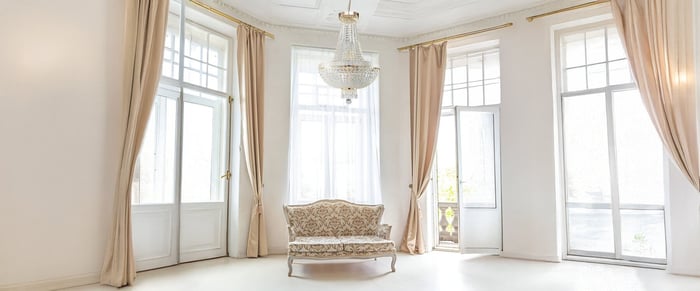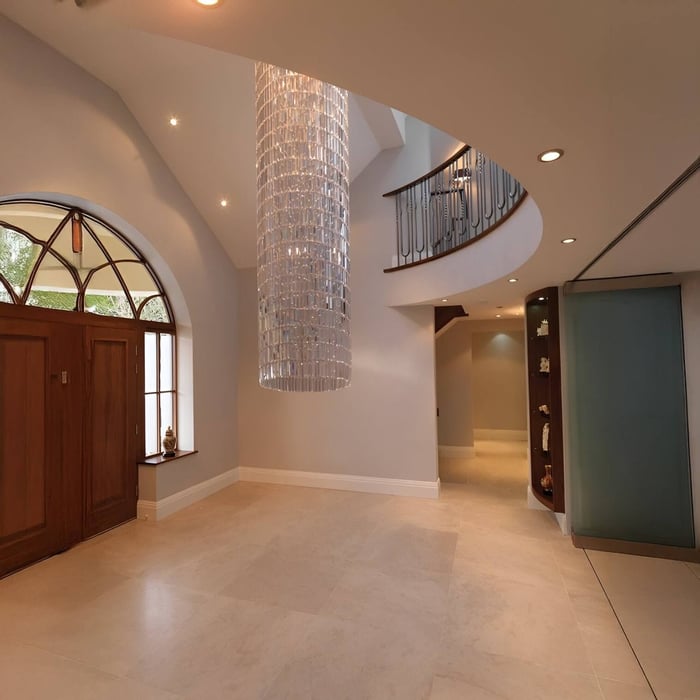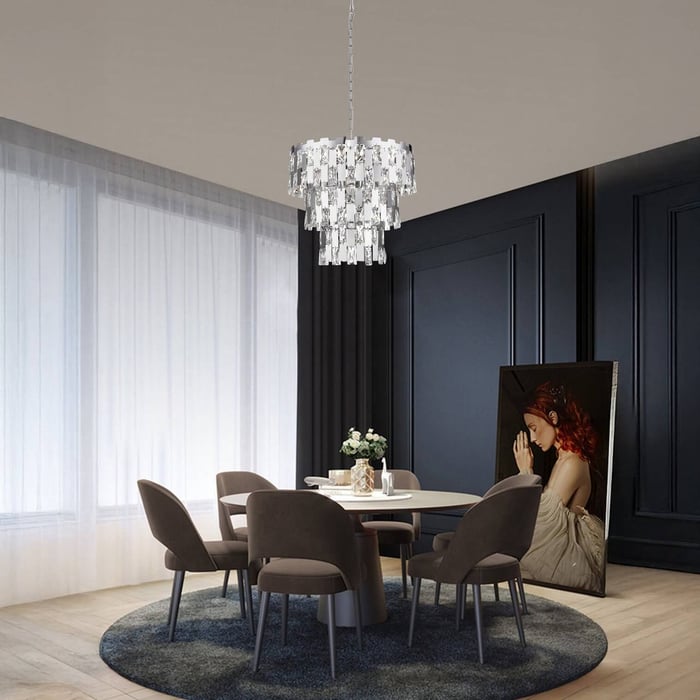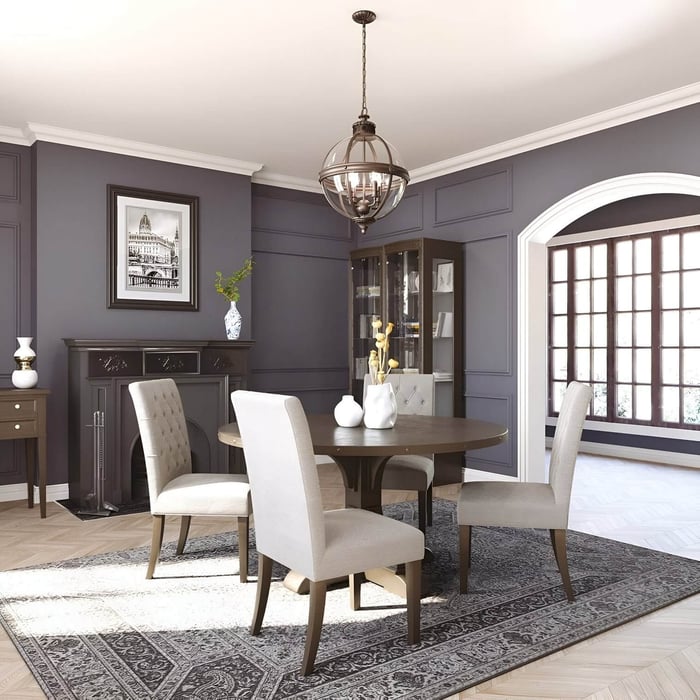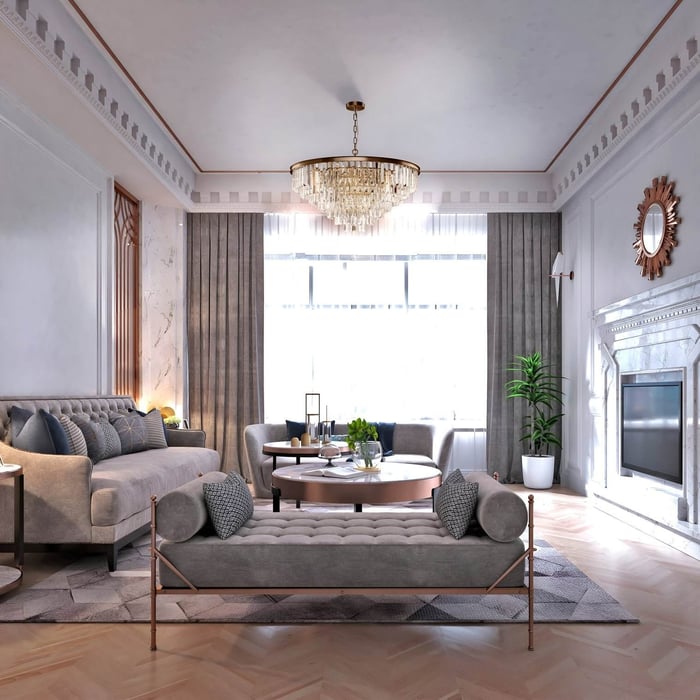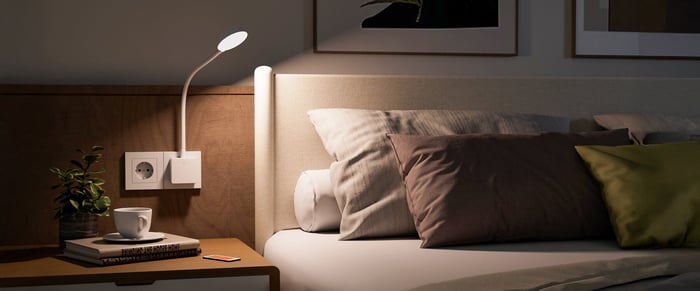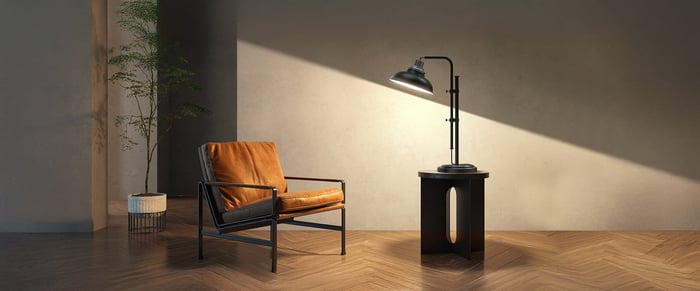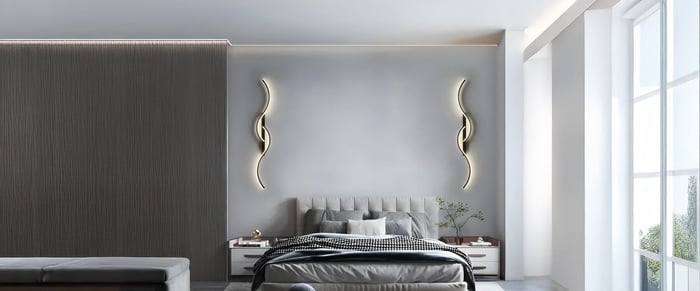Table of Contents
- Introduction
- Luxury Crystal Chandeliers – When to Invest
- Affordable Crystal Chandeliers – Achieving Impact on a Budget
- Material & Finish Comparisons
- Modern Chandeliers vs. Traditional Chandeliers in Crystal Designs
- Choosing the Right Crystal Chandelier for Your Budget
- Maximizing Value Without Sacrificing Style
- Blending Crystal Chandeliers Across Styles
- Conclusion
- FAQs
Introduction
Crystal Chandeliers remain one of the most coveted lighting features in interior design, admired for their ability to bring instant drama, elegance, and refinement to any setting. Their sparkling crystal arrangements refract and scatter light into captivating patterns, creating an ambience that is both glamorous and inviting. Once a hallmark of palatial estates and grand ballrooms, Crystal Chandeliers have found their way into homes of all sizes, proving that their appeal transcends architecture, budget, and time.
Today, homeowners are spoilt for choice. From opulent statement pieces dripping with hand-cut crystals to budget-friendly designs that echo the same brilliance at a fraction of the cost, there’s a chandelier to suit nearly every style and space. The challenge lies in finding the right balance between budget, quality, and style. This guide compares luxury and affordable Crystal Chandeliers, while also exploring how they intersect with Modern Chandeliers and Traditional Chandeliers, to help you make the right choice for your home.
We’ll break down key differences in craftsmanship, materials, finishes, and design approaches, along with practical tips on coordinating your selection with your overall interior style. Whether you lean towards sleek minimalism, ornate tradition, or somewhere in between, this guide will help you navigate both the aesthetic and practical considerations before you invest.
Luxury Crystal Chandeliers – When to Invest
Defining Luxury Quality
Luxury Crystal Chandeliers are as much works of art as they are sources of illumination. They are meticulously designed, often taking inspiration from architecture, jewelry, and sculpture, resulting in pieces that feel as timeless as they are striking.
Key features of high-end designs include:
Optical-grade, hand-cut crystals with high lead content for exceptional clarity and sparkle.
Solid brass or premium alloy frames, often finished in gold, nickel, or chrome plating to prevent tarnish.
Complex, multi-tiered structures that create depth and presence in a room.
Artisanal craftsmanship, with each crystal individually set and polished.
These fixtures are built to last decades, both structurally and stylistically, and serve as heirloom pieces in the home.
Best Use Cases
Formal dining rooms where grandeur is the focal point.
Double-height foyers or entryways to establish a dramatic first impression.
Luxury living areas where statement lighting enhances a carefully curated design scheme.
If your priority is longevity, timeless appeal, and a centrepiece that commands attention, luxury Crystal Chandeliers are worth the investment.
Affordable Crystal Chandeliers – Achieving Impact on a Budget
Quality to Expect
Affordable Crystal Chandeliers have improved significantly in design and construction over the past decade. While they may not match the artisanal quality of luxury pieces, they can still deliver impressive style and a high-impact look.
Common features of budget-friendly options include:
Machine-cut crystal or acrylic alternatives that mimic the sparkle of leaded crystal.
Steel or alloy frames with powder-coated or painted finishes.
Streamlined silhouettes that are easier to install and maintain.
While they may have fewer intricate details, these designs can still feel upscale when chosen and styled strategically.
Styling Tips
Pair an affordable chandelier in your dining space with Modern Chandeliers in connecting areas for visual consistency.
Select a fixture with a bold frame shape to maintain presence even when unlit.
Combine with wall sconces or floor lamps to layer lighting and enhance the perceived brilliance of the crystals.
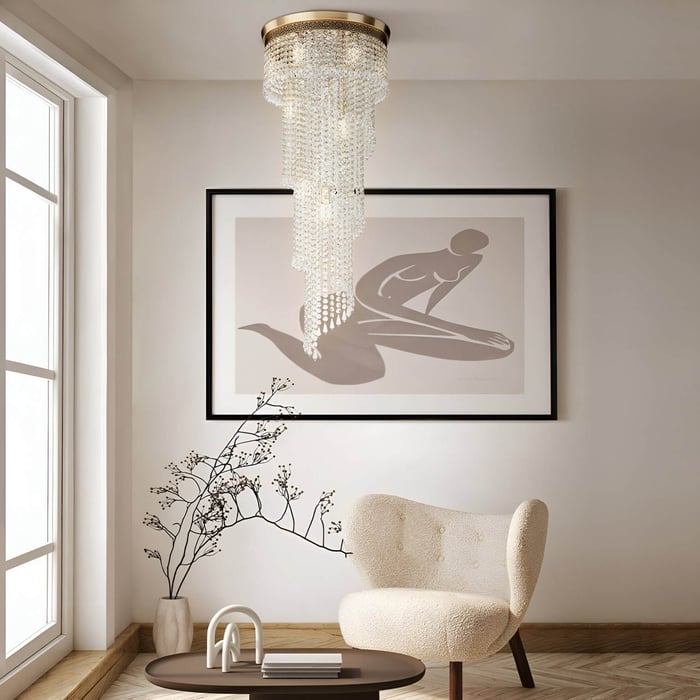
Material & Finish Comparisons
Luxury Crystal Chandeliers:
Solid brass or premium alloys for strength and elegance.
Plated finishes like polished nickel or 24k gold for long-lasting lustre.
Hand-cut, high-lead-content crystals with unmatched refraction.
Affordable Crystal Chandeliers:
Steel or lighter alloys with powder-coated or painted finishes.
Glass or acrylic crystal alternatives for reduced cost and weight.
Designs optimized for standard ceiling heights and simpler installation.
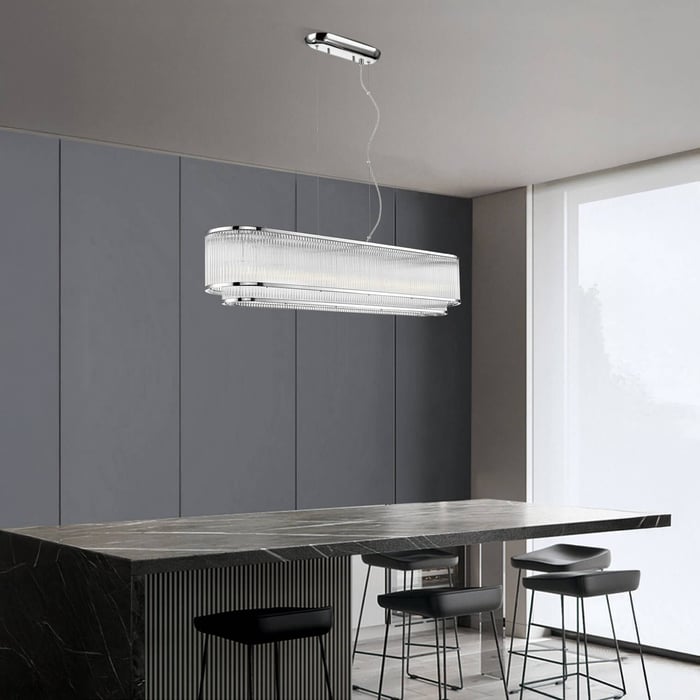
Modern Chandeliers vs. Traditional Chandeliers in Crystal Designs
Modern Chandeliers
Modern Chandeliers reimagine crystal elements in streamlined and geometric forms. Crystals are often integrated subtly into metal or glass structures, offering sparkle without overwhelming the minimalist aesthetic.
Defining traits:
Clean lines and minimal ornamentation.
Finishes in chrome, matte black, or brushed nickel.
Ideal for open-plan layouts and contemporary interiors.
Traditional Chandeliers
Traditional Chandeliers embrace ornate craftsmanship, historical references, and generous use of crystal. They often have curved arms, layered tiers, and intricate detailing that evoke a sense of heritage.
Defining traits:
Warm metal finishes like antique brass or bronze.
Decorative scrollwork, carved details, and cascading crystals.
Perfect for heritage homes, formal lounges, and dining rooms with classic proportions.
Choosing the Right Crystal Chandelier for Your Budget
Step-by-Step Buyer’s Guide:
Identify Your Style: Determine if your space calls for the precision of Modern Chandeliers, the richness of Traditional Chandeliers, or a fusion of the two.
Prioritize Features: For luxury, focus on crystal quality and craftsmanship; for budget, prioritize silhouette and finish.
Match Your Finishes: Coordinate with door handles, cabinet pulls, or table legs for a unified look.
Scale for the Room: Ensure proportions work with ceiling height and furniture placement.
Plan for Maintenance: Consider ease of cleaning and whether the design suits your household’s lifestyle.
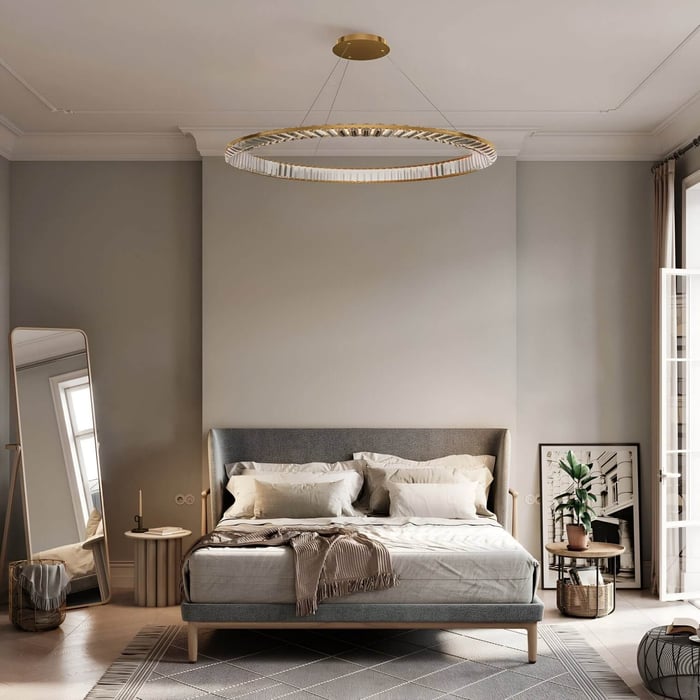
Maximizing Value Without Sacrificing Style
A well-chosen Crystal Chandelier can become the centrepiece of your home, even if you’re working within a modest budget. The key lies in making intentional, strategic choices that highlight both style and placement without overspending.
Prioritise high-impact areas – Place your most detailed Crystal Chandelier in the home’s most visible or frequently used space, such as a grand entryway, dining room, or main living area. This ensures guests immediately notice its craftsmanship and sparkle, setting the tone for the rest of the home.
Create visual flow with supporting fixtures – Use complementary Modern Chandeliers or Traditional Chandeliers in secondary rooms to maintain a consistent style story throughout your interiors. This approach creates cohesion without requiring every piece to be crystal-based.
Leverage lighting controls – Installing a quality dimmer allows you to adjust brightness levels to suit different times of day or events. At full brightness, crystals scatter light dramatically; at lower levels, they provide a softer, more intimate glow that shifts the room’s ambience with ease.
By concentrating your investment on one statement piece and supporting it with well-chosen secondary fixtures, you can achieve a high-end look that feels intentional, balanced, and timeless, without exceeding your budget.
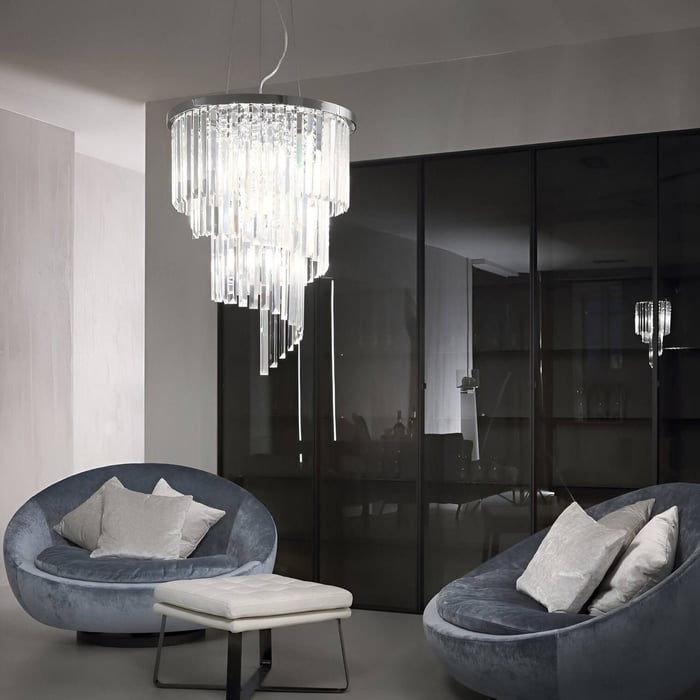
Blending Crystal Chandeliers Across Styles
One of the greatest strengths of Crystal Chandeliers is their adaptability. Their reflective surfaces and intricate designs allow them to work seamlessly across multiple interior design styles, from cutting-edge minimalism to ornate traditional spaces.
Modern Luxe – Pair a sleek chrome frame with fine-cut crystal drops in a minimalist room to achieve understated glamour. The simplicity of the frame allows the sparkle to take centre stage while keeping the overall aesthetic clean and contemporary. This pairing is perfect for spaces with open layouts, monochromatic colour schemes, or bold architectural lines.
Rustic Glam – For a warm yet sophisticated twist, combine raw timber beams or exposed brick with a crystal fixture. The contrast between rugged, organic textures and the refined brilliance of crystal creates depth and personality, making the space feel curated and unique.
Classic Grandeur – In formal spaces such as a dining room with wainscoting or a sitting room with a coffered ceiling, a tiered, crystal-heavy design can amplify architectural detail. Opt for designs with cascading strands or multi-tier formations to draw the eye upward and highlight the room’s symmetry and height.
This versatility means a single Crystal Chandelier style can be adapted to different parts of the home, bridging aesthetic divides between Modern Chandeliers and Traditional Chandeliers while maintaining a sense of harmony.
Conclusion
Crystal Chandeliers continue to be one of the most versatile and expressive design elements in interiors, offering beauty, functionality, and adaptability across budgets. Luxury options deliver unparalleled clarity, craftsmanship, and longevity, while affordable designs bring attainable elegance without sacrificing impact. Modern Chandeliers add crisp sophistication, Traditional Chandeliers offer historic charm, and crystal designs have the flexibility to bridge both styles.
Ultimately, your choice will depend on your home’s architectural style, your desired level of investment, and how you want the piece to interact with your space over time. Whether you opt for a singular statement or blend different chandelier styles for layered visual interest, the right choice will do more than provide light, it will define the room’s character, set the tone, and create a lasting impression.
Explore our curated collection of Niori to find the perfect design for your style and budget.
FAQs
Are Crystal Chandeliers suitable for every room style?
Yes. Crystal Chandeliers are highly versatile and can enhance a range of interiors. They complement the clean lines of Modern Chandeliers, the ornate details of Traditional Chandeliers, and transitional spaces that blend both styles.
How do I choose between a luxury and an affordable Crystal Chandelier?
Your decision should be based on budget, quality expectations, and long-term plans for the space. Luxury designs offer superior clarity, craftsmanship, and durability, while affordable options provide accessible elegance with lower maintenance costs.
Can Crystal Chandeliers work in smaller rooms?
Yes, but proportion is key. In smaller rooms, opt for a compact design or a chandelier with fewer tiers to maintain balance without overwhelming the space.
What’s the best way to match Crystal Chandeliers with other fixtures?
Match finishes with existing metalwork such as cabinet handles, door hardware, or nearby lighting. For example, a chrome-finished chandelier pairs well with modern hardware, while antique brass suits traditional interiors.
What should I consider before installing a Crystal Chandelier?
Before installation, check the ceiling height, weight capacity, and whether the location has appropriate electrical wiring. Also, decide if you need a dimming function for adjustable ambience and ensure the fixture’s rating matches the room’s environment, especially in spaces with higher humidity.
